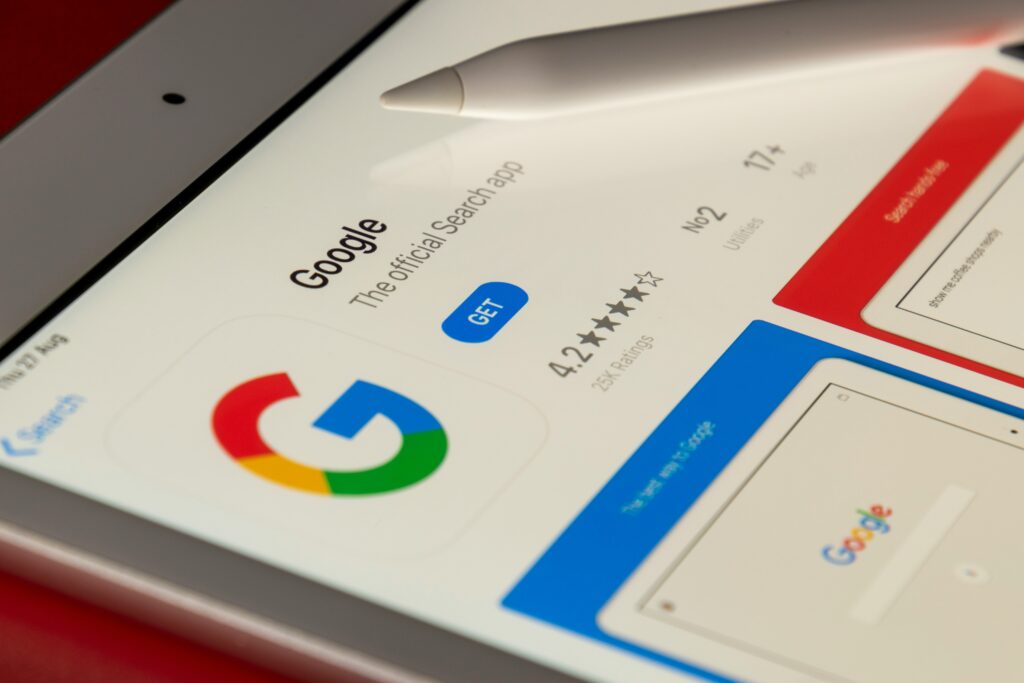Why SEO Still Matters in a Crowded Media Landscape
Search visibility remains the most durable route for content discovery—especially for media companies playing the long game. While social platforms might bring a spike, those viral bursts fade fast. SEO, on the other hand, compounds. A well-optimized article can pull traffic for years, across channels, across seasons. It’s not sexy, but it works.
For media brands, the stakes are higher. You’re not managing a handful of pages. You’re managing tens of thousands—articles, videos, transcripts, landing pages. Scale brings power, but also pressure. Indexation issues, content cannibalization, and crawl budget waste hit harder when volume gets out of control. A sharp SEO strategy can keep growth sustainable—without choking on your own archive.
Unlike influencer-led brands that rely on personality-driven clicks, media companies need to win trust via relevance and visibility. Ranking well doesn’t just mean traffic—it signals authority. And in an ecosystem drowning in noise, that signal makes all the difference.
Core Technical Foundations to Get Right
This is the part people love to ignore—until their traffic tanks. You can’t build authority if your site doesn’t load fast, play nice with any screen size, and hand Google what it’s looking for on a silver platter. The basics aren’t glamorous, but they’re non-negotiable.
Start with speed. Media-heavy pages are notoriously slow, so lazy loading, efficient caching, and compressed assets should be table stakes. Every second counts, especially on mobile. Speaking of mobile—responsive design isn’t a nice-to-have anymore. If your site chokes on smaller screens, you’re invisible to where much of your audience actually lives.
Next: structured data. If you’re not using schema markup, you’re missing out on rich results—those elevated search listings with thumbnails, dates, carousels, and more. For media companies, this means episode data, article types, and video details clearly flagged for crawlers.
Finally, indexing hygiene. Audit often. Remove or redirect duplicate pages. Fix crawl errors. Consolidate outdated content that no longer serves your strategy. Search bots don’t like waste, and stale assets do you no favors. Clean sites win. Always have.
Technical SEO isn’t flashy. But it’s the foundation everything else stands on.
Content Strategy That Wins
Media companies used to throw volume at the wall and hope something stuck. That era’s over. In 2024, topic authority beats bulk every time. It’s not about how many articles you push out—it’s about how deeply you cover a subject. If your site becomes the go-to resource for a specific beat (think: climate policy, esports, city politics), you’re training search engines to trust you. Depth wins.
That starts with understanding user intent. Keywords are only half the picture. Someone searching “EV tax credit” isn’t just looking for news—they want usable insight. So build content to match that intent: explainers, timelines, calculators, and guides can often outperform straight news.
Next, think in clusters—not one-offs. One strong evergreen anchor (a definitive guide) surrounded by tightly related, internally linked pieces builds relevance and authority over time. That structure helps readers go deeper, and helps crawlers grasp how your content fits together.
Finally, it’s about balance. Evergreen content keeps paying dividends. Time-sensitive pieces earn short-term clicks and relevance. A smart strategy uses both—evergreens as the foundation, news to drive spikes. The result? An SEO engine that runs lean, but strong.
E-A-T and Why It’s Critical for Media Brands
In an era of mass content and misinformation, building and showcasing Expertise, Authoritativeness, and Trustworthiness—E-A-T—isn’t optional for media companies. It’s foundational. Platforms like Google are paying closer attention to where content comes from, who creates it, and how it’s vetted. That means media brands must stop hiding behind faceless bylines and start treating transparency as a ranking factor.
Contributor bios are step one. Real names, credentials, and links to credible work help validate that your experts are, well, actual experts. Next, publish clear editorial standards. Show your audience (and the algorithms) how you verify facts, correct mistakes, and select sources. If you’re quoting a study, link to the primary source. If you’re analyzing data, explain your method.
Manual trust signals—like visible author pages and ethics policy disclosures—work hand-in-hand with algorithmic ones. The more signals you send that your content is accountable and accurate, the more search engines lean in. That trust trickles down to users too. If your brand wants readers to stay, subscribe, or share, they need to believe in your credibility. E-A-T helps them do that.
How to Use Data to Drive Performance
Understanding how users interact with your content—and why—is at the heart of a successful SEO strategy. Media companies that harness performance data not only grow traffic, but also make smarter editorial and business decisions.
Use Search Intent to Shape Strategy
Not all clicks are created equal. Behind every search query is a user goal—and tapping into that intent is critical for creating high-performing content.
- Analyze search queries leading to your top pages
- Categorize intent types: informational, navigational, transactional
- Develop content formats that best match each intent (e.g., FAQs, explainers, lists)
- Refine editorial angles based on recurring patterns or topic gaps
Double Down on Proven Formats
Some content formats simply work better—be it in engagement, dwell time, or shares. Instead of reinventing the wheel, identify what’s already performing well and find ways to expand.
- Audit your highest-traffic and longest-engaged pages
- Examine layout, tone, headline structure, and use of media
- Create new content that follows similar formatting in related topics or categories
- Use internal linking to build interconnected topic ecosystems
Track Beyond Traffic: Conversions Matter
Raw visitor numbers are only part of the story. For media companies, measuring conversions—subscriptions, signups, downloads, or time spent—is key to evaluating actual content value.
- Define what a conversion looks like for each content type
- Set up goals in analytics platforms to track reader actions beyond pageviews
- Use performance insights to prioritize updates, promotional efforts, or repackaging
- Segment data to learn what drives high-value behavior (device, source, location)
Pro Tip: Don’t just chase clicks. Create a feedback loop between search data, editorial planning, and user engagement metrics to build a long-term, data-informed content engine.
Don’t Sleep on On-Page Optimization
You don’t need to overthink it—but you do need to care. On-page SEO in 2024 is less about stuffing keywords and more about showing up where users are looking with clarity and structure.
Keyword Placement for Readability
Keywords still matter, but shoving one into every headline won’t get you ranked—Google’s too smart for that now. Instead, fold them in naturally: page titles, intro paragraphs, CTAs, and meta descriptions. Use variations. Speak like your users search. If it reads clunky, you’ve gone too far.
Headings Should Work Hard
Headings aren’t just visual breaks—they guide both users and crawlers. Use one H1 per page. Follow with a clear hierarchy: H2s for sections, H3s inside them if you need to go deeper. It keeps content scannable and logical. Google prefers clean structure—it’s how it reads context at scale.
Image Optimization: Often Overlooked, Always Necessary
Images slow down pages and get missed in search unless tuned. Compress every file without killing quality (aim for under 100KB where possible). Use descriptive file names, not “screenshot2024-05-01”. And don’t forget alt text—it’s not just for accessibility; it’s a relevance signal too.
These updates aren’t optional. They’re the basic upkeep of modern SEO. Ignore them, and your content stays invisible. Get them right, and you give your best ideas a chance to compete.
Link Building—Quality Beats Quantity
In 2024, link building isn’t about blasting cold emails or dropping links in shady directories. It’s about being worth talking about. That starts with earned media: if your content is sharp, timely, and rooted in real insight, the mentions will come—and they’ll come from outlets that matter. Partnering with respected publications, collaborating on research, and contributing expert commentary aren’t shortcuts, but they build lasting authority.
The best backlinks show up because the content earns them. Think in-depth explainers, original reporting, or data pieces others want to cite. Not fluff. Not recycled SEO filler repackaged with a new headline.
Outreach should be smart, not desperate. Skip the spammy templates and list buys. Focus on relevance, genuine value exchange, and relationships that move the needle. It’s slower, but the payoff compounds over time.
Strong content plus strong reputation equals strong links. That’s the equation that still works.
Shifting Landscape: SEO in 2024 and Beyond
AI-generated content is everywhere—and it’s dividing the room. For media companies, the appeal is obvious: faster production, lower costs, and always-on output. But the risks? Loss of originality, inconsistency in tone, and the potential to get buried by Google’s increasingly picky algorithms.
Google’s Helpful Content System now prizes authenticity over quantity. Pages packed with surface-level, auto-generated fluff won’t cut it. Instead, content needs to solve problems, answer questions clearly, and feel like it was made by people who know what they’re talking about. Media sites that lean too hard on GenAI without strong editorial oversight are the first to see rankings slip.
Then there’s the rise of zero-click search and voice assistants—places where search results surface answers, not links. This shifts the goal: it’s not only about driving traffic, but about owning the answer that gets read aloud or highlighted at the top of a result. That means structured data, concise language, and content designed to serve directly inside the SERP.
In 2024, SEO isn’t just about visibility—it’s about credibility, context, and usefulness. AI can help, but only if it’s used wisely and supported by human judgment at every turn.
Building Loyalty Through Optimized Experience
SEO used to be about keywords. Today, it’s about people. Search engines are getting better at tracking how real users interact with your site—how long they stick around, what they click, what they ignore. That’s why aligning your SEO strategy with audience-first thinking isn’t a luxury. It’s the bar.
This starts with content that solves problems, respects time, and loads without friction. Pages that answer questions clearly, flow well on mobile, and thread users to related topics naturally. You’re not just optimizing for bots anymore—you’re optimizing for behavior.
Personalization is part of it. That could mean location-based suggestions, tailored newsletters, or navigation paths that adapt to user habits. These aren’t just conversion tricks. They’re signals to Google and others that your site is valuable, relevant, and built for humans.
User experience (UX) remains one of the most overlooked ranking factors—and one of the most powerful. Fast performance, clean design, and intuitive structure all indirectly boost SEO by keeping bounce rates low and satisfaction high.
You’re not just chasing clicks. You’re curating a return journey. For a deeper look into how media brands are using personalization to build lasting connection, check out Building Brand Loyalty Through Personalized Media Experiences.
Final Thoughts
Media SEO isn’t about hacks—it’s process, discipline, and long-term investment. You don’t win by loading up on keywords or chasing every new algorithm update like it’s gospel. The smart players are building systems: technical foundations that scale, editorial workflows aligned with search behavior, and analytics that drive decisions, not just dashboards.
Infrastructure matters. If your CMS is slow, your data’s messy, or your teams aren’t talking to each other, no amount of optimization will save you. SEO success comes from durable frameworks—tight crawl control, solid internal linking, and real strategy behind every piece of content.
Yes, the goalposts are always shifting. But the fundamentals haven’t changed. Serve the user first. Be useful, fast, and understandable. If that’s where your energy goes, rankings tend to follow. Don’t shortcut. Build for the long haul.




